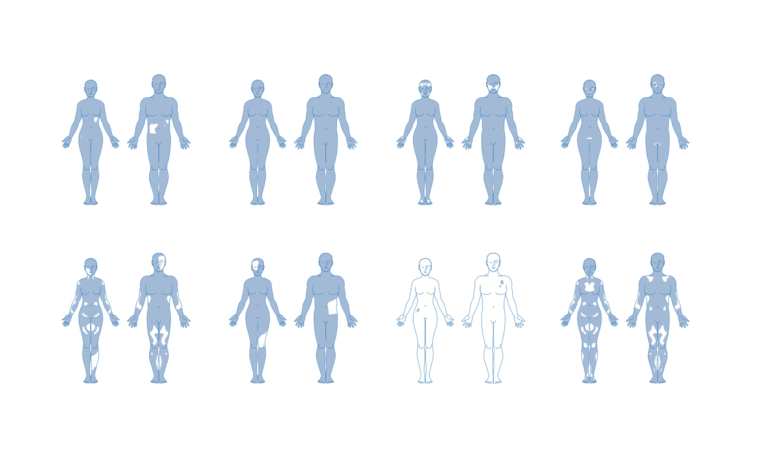Vitiligo can appear on any body site, taking different shapes and forms. In most cases, it is more frequent on the face and genitals than the hands and feet, and the rest of the body. But did you know that the amount of vitiligo on the body determines the subtype of the skin condition? Different subtypes of vitiligo can be found within the affected population to hint a better or worse prognosis with treatment based on their distribution in body areas. Hence, it becomes extremely important to self-identify the exact type of vitiligo for any kind of treatment and self-care or self-management. The information guide below can help you achieve the same.
Localized vitiligo
In this subtype of vitiligo, skin patches are found on limited areas of the body. However, this variant can potentially spread and evolve into another subtype followed by an allergic reaction from medicine or certain combination of foods.
Generalized vitiligo
People affected by this subtype have skin patches scattered across their body. In generalized vitiligo, the spots can spread to involve large parts of the body.
Mucosal vitiligo
In this subtype, white patches affect the mucous membranes found in the mouth and/or genitals. As per a study conducted by the National Library of Medicine (published in PubMed Central®), out of one hundred vitiligo patients, twenty-one patients showed intra oral mucosal depigmentation. Among the intraoral mucosal sites, palate is found to be the common.
Focal vitiligo
In this clinical variant, white patches remain concentrated in a small area of the body without spreading in the first two years.
Trichome vitiligo
Instead of a smooth white depigmented patch, patches in trichome vitiligo contain a white mixed with lighter hypopigmented patches. It is characterized by an intermediate zone of hypopigmentation located between the depigmented center and the peripheral unaffected skin.
Universal vitiligo
If more than 80% of a person’s body is affected by vitiligo, it’s clinically described as universal vitiligo. Interestingly, most people living with universal vitiligo usually retain pigment in their hair. This is the rarest subtype of vitiligo.
Mixed vitiligo
Though very rare, people with mixed vitiligo have a segmental vitiligo on one side of the body (that is mostly limited by the midline) and other or one of the subtypes of vitiligo.
A point to remember: The areas of the body without hair (lips, fingertips, knuckles, underside of the wrists, feet, and parts of the genital areas) usually do not respond well to most medical treatments for vitiligo. If your pattern of vitiligo predominantly involves these areas, make sure you make important dietary changes and lifestyle tweaks to try to stop vitiligo from spreading.

